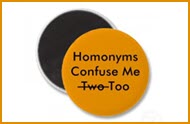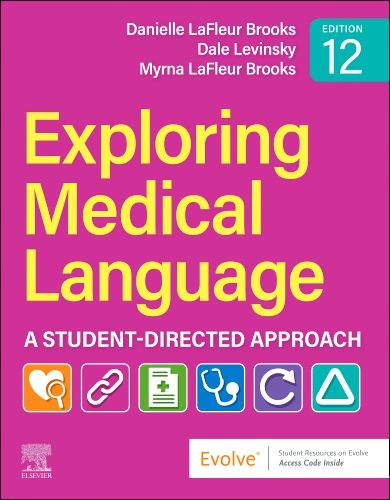Why this Textbook Stood the Test of Time
32 Years and Counting!
The Possibilities
Imagine that you find yourself with a contract to write a textbook for Mosby Inc. a reputable publishing company. There is some competition, but still, it is an emerging discipline. It is an opportunity to create a standard. You have a passion for the subject. You have ideas on how the content can be learned in an efficient, thorough, and engaging manner. Motivating and empowering students needs to be the emphasis. Finally, you have a writing partner, and you have a blank piece of paper. Where do you start?

The Outcome
This was me 35 years ago. The sheet of blank paper in 1983, with the help of Winifred Starr (1921-1993), has now turned into the 10th edition of Exploring Medical Language. Since Elsevier Inc. publishing company became affiliated with Mosby in 1994, over a million copies have been sold. Why has the textbook stood the test of time? I cannot know all the reasons, but I do think some enduring features have played a role in the success of this textbook. Since many of these features may be important to all successful writing, I would like to share them with you.
Selecting A Winning Title
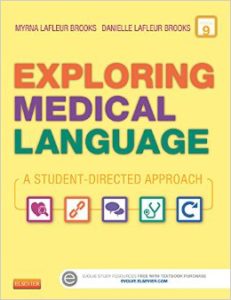
Most would agree the first impression of a book is from its title.
I think two things stand out in the title Exploring Medical Language – Student-Directed Approach. First the action verb “exploring” suggests we are going on an adventure together with you, the student, to acquire this new language. Second, “a student-directed approach,” tells the student this textbook is for you.
Choosing a Distinctive Cover
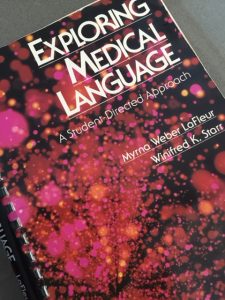
Yes, I do think one can tell a book by its cover, and as many authors know the cover is vital to a book’s success.
In 1985 medical textbooks covers were traditional. They were academic. They looked the same. Our cover was different — bold and even brash. Consequently, it stood out from other well-done texts with the more traditional cover designs. Here is the 1985 – 1st edition cover. One might say it was eye-catching.
Keeping Up with Technology
Keeping up with technology was essential for the long-term success of a textbook.

Three computer-assisted instruction software discs accompanied the first edition (1985). Exercises that could be shared with the students were part of the content. Considering that the first computer mouse surfaced in 1984, it may be safe to say that computer-assisted instruction software was on the cutting edge in 1985.
So as technology advanced so did our offerings. As a result, the 10th edition offers a complete faculty support package including a test bank, PowerPoint presentations, and lesson plans. The textbook and online program are interactive requiring the student to complete exercises in both modes. Games, electronic health records (EHR), gradable quizzes, and adaptable learning platform accompany the textbook.
Also, we continue to enhance our offering and to “explore medical language” with our blog – MedTerm Topics – which provides information necessary for students, faculty, and the public to keep current with medical terms in the rapidly evolving healthcare environment.
Leveraging Tried and True Learning Tools
Sticking with something tried and true is fine, even good.
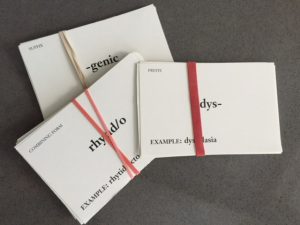
Paper flashcards were included with the first edition. Although we used flashcards in the classroom we were hesitant to have them accompany the book. There was concern that flashcards might be inappropriate for learning post-high school level. Again, we focused on the student and learned that flashcards not only would be used, but they were desired. Today we offer flashcards in both paper and electronic format.
Developing A Unique Learning Style
Spending the effort to develop something unique to one’s writing or student learning pays off.
A unique learning style developed by Winnie Starr and myself utilizes building, analyzing, and defining exercises which use word parts to learn terms composed of Greek and Latin origin. It provides an effective and efficient way to acquire medical language. As a result of their success, these exercises remain a very popular feature of Exploring Medical Language, which sets the text apart from others.
Staying Focused
Staying focused on the purpose of the book can be challenging.
Choosing core content and staying focused on it is vital to the success of the work. Because of this, we examined how best to support the student to learn the complexities of medical terminology. Other medical terminology texts included a detailed presentation of anatomy and physiology. Yet we decided not to, thinking most students were already proficient in the discipline. Hense the focus remains on medical terms. However, we have added an online Anatomy Booster as an option for those needing more information.
Offering Learning Variation
Realizing people learn differently is important.
We catered to this. Many varied exercises and the answers were part of the 1st edition. Plus, answers in the textbook allowed the students to manage their own learning experience. These varied exercises remain popular today. Included in the 10th edition are application exercises including interactive medical records, translating everyday language into medical language and pronunciation of terms.
Furthermore, there is now also an online learning platform to which added, even more, variation.

Writing Objectives for Each Chapter
Objectives provide a clear picture of what is to be learned.
Objectives that are specific and achievable define measurable outcomes and remove redundancy. The first edition of Exploring Medial Language was objective-based which is common today, but not the case in 1985. In addition, the 10th edition is not only objective-based in content, but the test-bank is objective identified as well
In conclusion, I believe the features that I outlined have allowed Exploring Medical Language to stand the test of time. Please employ any aspect of this list in your writing that you feel might benefit your project. I am privileged to have my daughter Danielle LaFleur Brooks as my coauthor. We continue to enjoy the support and expertise of the Elsevier publishing company.

